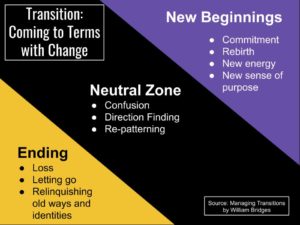What Interim Executive Directors Do – recorded August 12, 2020
Interim executive directors play an important role in a nonprofit leadership transition. But what do they actually do? Why are they valuable? How can you become one?
Interim executive directors play an important role in a nonprofit leadership transition. But what do they actually do? Why are they valuable? How can you become one?
In this video, I cover many ways you can recruit and retain great board members. There’s a ton of ideas on where to look for members that you might not have considered, but it is just important to make sure your recruits have a great experience. We talk about nominations, interviews, onboarding, and more.
 Joining a nonprofit board is often represented as the ultimate way to serve an organization, but it isn’t always the best option for everyone. Here are some considerations:
Joining a nonprofit board is often represented as the ultimate way to serve an organization, but it isn’t always the best option for everyone. Here are some considerations:
Do you prefer working in teams or alone?
All good boards function as strong teams of people who get things done together. This involves plenty of meetings and robust discussion. Do you enjoy meetings or are you sick and tired of them? I have a friend who has no interest in going to any more meetings in his life. He just wants to get work done. He is a fantastic volunteer on work days at a nonprofit with me, and always willing to share insightful comments while we work. Everyone benefits in this situation.
Is your skill set something that lends itself to working alone?
Would you prefer to help organizations out by focusing on upgrading their technology, for example? You might want to volunteer to work with staff in that specific area, not by attending meetings to discuss the strategic direction of the organization.
 The chair of a nonprofit board has significant power to shape the organization, but all too often, that chair is not prepared to lead. More often than we’d like to admit, the previous board chair needed to step down unexpectedly and someone without training reluctantly takes the position. In a recent study, over half the respondents reported they did nothing to prepare for their role as a board chair. The new board chair is frustrated, because they aren’t sure what to do. The executive director is frustrated, because they have an ineffective board chair. The rest of the board members start pulling back and don’t want to attend meetings. None of this helps the organization grow.
The chair of a nonprofit board has significant power to shape the organization, but all too often, that chair is not prepared to lead. More often than we’d like to admit, the previous board chair needed to step down unexpectedly and someone without training reluctantly takes the position. In a recent study, over half the respondents reported they did nothing to prepare for their role as a board chair. The new board chair is frustrated, because they aren’t sure what to do. The executive director is frustrated, because they have an ineffective board chair. The rest of the board members start pulling back and don’t want to attend meetings. None of this helps the organization grow.
It’s unfortunate, since a great board chair has a real opportunity to make a positive difference for the organization. They can inspire their fellow board members to do their best and support the executive director tremendously. Board chairs need to have a wide range of skills, especially in working with others. They also need to have the time to focus on the board and the organization. The process to choose the next board chair should be deliberate, but it is too often made in a time of panic as the previous chair leaves.
 The possibility of a long-term trusted and high performing executive director leaving their position is a scary prospect for most boards. It can be made more manageable by intentional planning and open discussions. In addition, taking the time to explore succession planning and leadership development now will benefit the organization immediately through reduced workloads, better-trained staff, and the opportunity for future growth.
The possibility of a long-term trusted and high performing executive director leaving their position is a scary prospect for most boards. It can be made more manageable by intentional planning and open discussions. In addition, taking the time to explore succession planning and leadership development now will benefit the organization immediately through reduced workloads, better-trained staff, and the opportunity for future growth.
Through a new program called Successful Transitions, Lincoln organizations developed their plans and prepared for the future. The first Successful Transitions cohort consisted of six nonprofit organizations. One has an executive director who had a firm retirement date less than a year away. Two others have founding executive directors considering retirement someday in the future, but knew they needed to put plans in place for a smooth transition. The other three have no departure plans but understood that succession planning would benefit the entire organization now and in the future. There was also a wide range of organization size (staff sizes between 1 and 75) and executive director tenure (2 to 40+ years).
In this video, I cover all of the basics of succession planning. It’s an important tool for long term sustainability for nonprofit organizations. Contact me and I’ll be happy to help you develop your own organization’s succession plan.
Change is Hard! How to Make It Easier for Everyone
We all deal with changes in different ways. What significantly affects one person is no big deal to another. The same event has various impacts on different people. For example, someone leaving a job will be thrilled at the new opportunities coming, while a co-worker is devastated to lose a fantastic colleague. At an organization with a new executive director starting, one of her program managers could be excited at the chance to work with someone new, while another manager is afraid of someone coming in and demanding to run programs in a new way.
Change is especially evident when an executive director leaves their position. This transition will affect everyone’s work load and level of comfort, but often people expect that a change is affecting others the same way as it does them. I often see this when a board has known about an upcoming departure for a month or longer, and staff don’t. When the staff are told, board members expect them to be ready to move on to the next step right away, forgetting that they also needed time to process this change.
 Here’s a selection of items to include in the board manual for new board members. Many of these documents you already have. If you find you need to create documents, your current board members will appreciate having them as well, so be sure to share them with everyone. Keep everything brief, but informative.
Here’s a selection of items to include in the board manual for new board members. Many of these documents you already have. If you find you need to create documents, your current board members will appreciate having them as well, so be sure to share them with everyone. Keep everything brief, but informative.
Consider whether it makes more sense to have these as printed documents, or if you would rather create a shared online area to store them. Every board and board member is different in how they prefer to receive information. Google Drive is a low-cost solution that nonprofits often use for sharing documents.

A conflict of interest policy is standard for most nonprofits, but a code of conduct and ethics lets you go beyond just financial conflicts and look at all aspects of being a board member. This could also be called a board agreement. It lays out basic guidelines for group norms, before you need them. Just like any group where you bring together a group of people who don’t know each other, they need to specify how they are going to work together.

As an executive director, I had a board that I enjoyed working with, but there were friction points. I now realize that the answer to these was simple, I needed a contract.
The truth is that boards aren’t great employers. The board-ED relationship is always a somewhat awkward one. An ED has 9 or 12 or 15 bosses, who are technically supposed to act together, but in reality they don’t always manage to do that. Plus the board composition changes regularly, so the ED’s relationship with them changes as well.